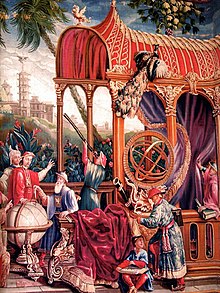I suspect that Splane was talking about the later missionary work of the Catholic order, the Society of Jesus (Jesuits), it was far more successful and was able to colonise (in a religious sense) Korea, which remains the most Christianised East Asian country with about 30% of the population claiming to be Christian.
Almost simultaneously with the Jesuit mission, Dominican Catholics were working in the south, from their base in the Philippines. You can still find Catholic churches in the south of China that date from that era. It was conflict between the Dominicans and Jesuits that eventually led to another ban on Christianity by the Qing Emperor Kangxi.
A Wikipedia entry notes:
Kangxi was also fond of the Jesuits' respectful and unobtrusive manner; they spoke the Chinese language well, and wore the silk robes of the elite.[15] In 1692, when Fr. Thomas Pereira requested tolerance for Christianity, Kangxi was willing to oblige, and issued the Edict of Toleration,[16] which recognized Catholicism, barred attacks on their churches, and legalized their missions and the practice of Christianity by the Chinese people.[17]
However, controversy arose over whether Chinese Christians could still take part in traditional Confucian ceremonies and ancestor worship, with the Jesuits arguing for tolerance and the Dominicans taking a hard-line against foreign "idolatry". The Dominican position won the support of Pope Clement XI, who in 1705 sent Charles-Thomas Maillard De Tournon as his representative to Kangxi, to communicate the ban on Chinese rites.[13][18] On 19 March 1715, Pope Clement XI issued the papal bull Ex illa die, which officially condemned Chinese rites.[13]
In response, Kangxi officially forbade Christian missions in China, as they were "causing trouble".[19]
Link: https://en.wikipedia.org/wiki/Kangxi_Emperor - under the sub-heading, Christianity
It can be argued that more advanced western astronomical technology(as in the above illustration) was the specific area that interested the Imperial court.
In other areas of technology, China was in advance of the west, as John Hobson demonstrates in his book, "The Eastern Origins of Western Civilisation," and the Jesuits channeled this technical information back to Europe.
An example, the French King Louis XIV, in 1685 sent six Jesuits to China, specifically to act as, what we would now call, 'commercial spies.' The French Academy of Science drew up a long list of topics for them to explore and send back as information about (including) scientific, military, agricultural and manufacturing subjects.


